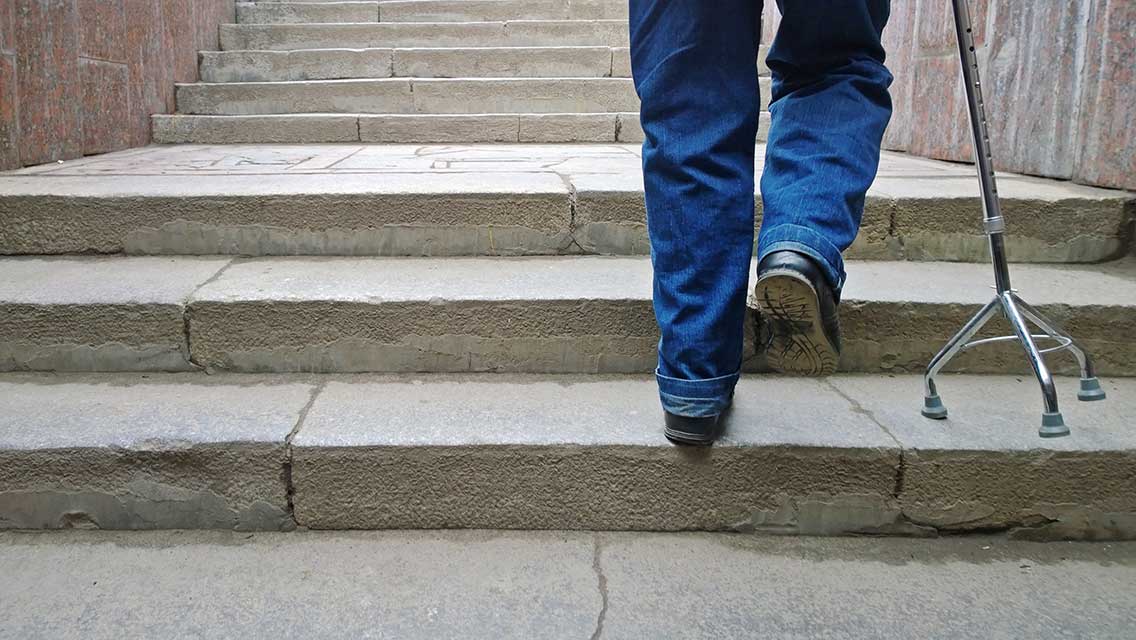Every few weeks, I drive across town to pick up my old pal Leo, take him to lunch, and find new reasons to worry about him. He’s 79, alarmingly frail, and coping with Parkinson’s the best he can. For all of the 40 years I’ve known this eccentric writer and raconteur, he’s lived alone and leaned on an expansive network of friends for both practical and pecuniary support. And last week, watching him struggle to descend the steps of his apartment building, I couldn’t help imagining the nightmare scenario that afflicts so many elderly folks: stumble . . . fall . . . ER . . . nursing home . . . hospice.
Some 3 million older Americans land in emergency rooms every year after taking a tumble and, as Amy Shaver, PharmD, MPH, puts it, their prognosis is seldom sunny. “If you fall and break a hip,” she tells the Washington Post, “the [chances] of your making it out of the hospital are not so good.”
You might wonder, then, why doctors send so many seniors to the pharmacy with prescriptions for drugs that dramatically increase their risk of falling. That’s what Shaver, a postdoctoral researcher at the University of Buffalo School of Public Health and Health Professions, and her team set out to learn in a study published recently in the journal Pharmacoepidemiology and Drug Safety. What they found was evidence enough to keep me, for one, away from the pharmacist: The percentage of adults 65 and older who were prescribed these meds rose from 57 percent in 1999 to 94 percent in 2017. Not surprisingly, I suppose, the number of deaths due to falling more than doubled among seniors during that time.
Leo often scolds me for avoiding the antihypertensive drugs he praises for managing his blood pressure, but Shaver’s study identified that class of medications, along with opioids and antidepressants, as the primary culprits causing the dramatic uptick in fall-related deaths.
During that 18-year period, doctors wrote more than 7.8 billion prescriptions for drugs that increased the likelihood of falling. “These drugs are doing what they are supposed to be doing,” Shaver explains. “There are valid reasons to prescribe them. But they can be problematic.”
Those problems are multiplied in the elderly, most of whom take several drugs every day to manage various chronic conditions. So, even if an individual medication doesn’t make you stumble, the interaction between multiple drugs may produce the same effect. Your primary-care doctor, however, often pens prescriptions while completely unaware of the drugs your specialist may be prescribing, a process that can create a dangerous prescription cascade.
Pharmaceuticals, of course, are the handiest tools within the limited reach of conventional physicians. That sad fact and the general unwillingness of elderly patients to question their decisions or seek alternative approaches combine to create the results Shaver and her team have revealed.
“Patients shouldn’t be afraid to ask a question,” she notes. “They need to ask whether a medication could make them more likely to fall when they are first given a medication. And, even if they have been on a medication for a while, they need to be vigilant and look for the warning labels on their medications and ask questions.”
There may be less-risky options, notes Greg Rhee, PhD, an assistant professor of medicine and public health at the University of Connecticut. Anticholinergic drugs, typically prescribed for treating depression as well as urinary, respiratory, and gastrointestinal disorders, have been shown to cause everything from drowsiness and hallucinations to involuntary muscle contractions — all of which can raise the possibility of a tumble. But studies have identified a number of alternatives that offer anticholinergic properties without the dangerous side effects.
Or you could explore nondrug approaches, such as exercise, to improve your strength, balance, and coordination. It’s a strategy research has shown can help the elderly reduce their risk of falling — at least when practiced judiciously. I’m just not sure it necessarily applies to my frail friend, who says he labors up and down the steep flight of stairs inside his apartment building from time to time just to stay limber.
If that’s not worrisome, I don’t know what is.





This Post Has One Comment
The health plan I belong to (U-Care) offers a once a year consult with a pharmacist (either in-person or by phone) to review all of the client’s drugs, Rx and OTC. I am a retired pharmacist, and I put this off for years, smugly reasoning that I did not need this free service BECAUSE I am a retired pharmacist. Well, for the last two years I have availed myself of this service and found it very helpful. It has helped me, along with my Drs, solve a number of problems caused by my Rx drugs and also my OTC drugs, the ones that many patients never inform their Drs about. I highly recommend this service if it is available through one’s health plan, even if you are a health care practitioner or, especially, if you are a health care practitioner.